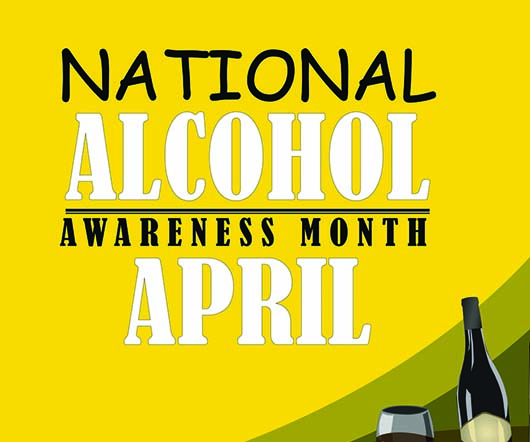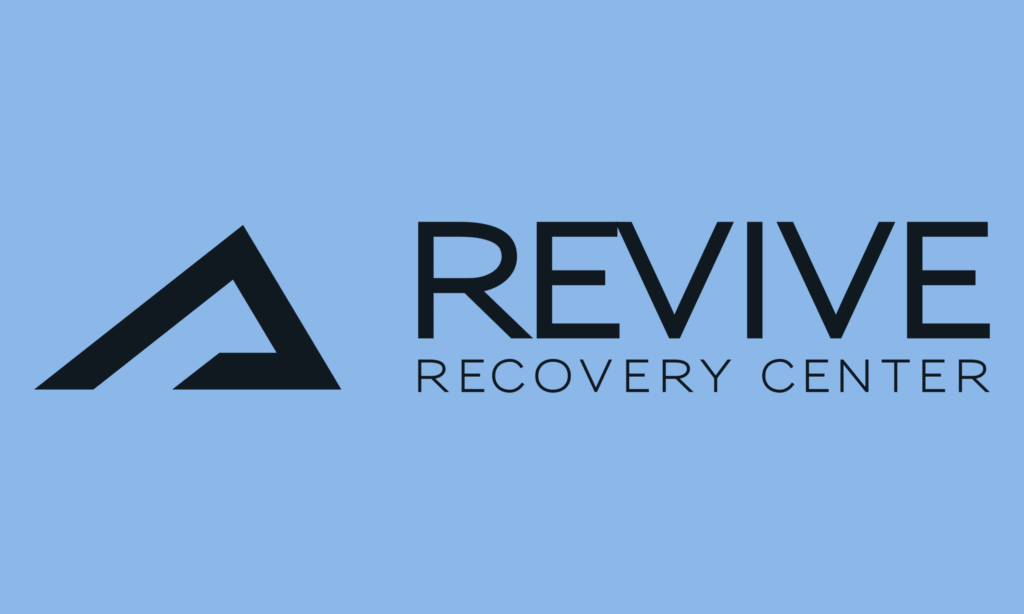By Stephanie Siete, Director of Community Education, Julie Wonsowicz-Moore, Senior Director of Clinical Services and Natalia Chimbo-Andrade, Community Education & Outreach ManagerA new year usually means new beginnings, goals, resolutions...
By Stephanie Siete, Director of Community Education, Julie Wonsowicz-Moore, Senior Director of Clinical Services and Natalia Chimbo-Andrade, Community Education & Outreach Manager
A new year usually means new beginnings, goals, resolutions and change… the same can also be said for overcoming drug addiction. But what do people really know about drug addiction unless they have been personally affected by it. The word “opioid” has been tossed around a lot lately in news reports, presidential addresses, and in the treatment of managing pain. However, identifying opioid drugs, current trends, behaviors, and withdrawal, needs to be addressed as a majority of the general public is not familiar with the deadly problem opioids have recently created. In 2014, 28,647 drug deaths involved some kind of opioid, including heroin. The Centers for Disease Control (CDC) indicates about 19,000 of these deaths were from prescription opioid pain relievers.
Drug Deaths on the Rise in the US
From 2000-2014, the number of unintentional drug overdose deaths in the United States increased 137%, while opioid specific deaths rose 200%. Sadly, during those 14 years, almost 500,000 people died from drug overdoses. The US is currently experiencing more people dying from drug overdoses than car crashes every year. In 2014, alone there were 47,055 unintentional drug overdose deaths, approximately one death every 11.16 minutes and over 60% of those deaths (28,647) were due to opioids. (CDC National Center for Health Statistics/Morbidity and Mortality Weekly Report (MMWR); January 1, 2016).
In the most recent report by the CDC, newest data shows from 2014 to 2015, drug overdose deaths increased by 5,349 (11.4%), totaling 52,404, signifying a continuing trend observed since 1999. Opioid death rates increased by 15.6% (33,091) from 2014 to 2015. (Increases in Drug and Opioid-Involved Overdose Deaths — United States, 2010–2015 (MMWR); December 16, 2016)
We Have an Opioid Crisis
Remember a few years ago all the campaigning and educating around methamphetamine? People identified meth use with “ugly” as users deteriorated: skin lesions, rotting teeth, gaunt appearance, etc. The opioid user is harder to identify. She can be a stay at home mom with 3 kids, a functioning full-time employee, or a 19 year old homeless teen. Opioids come in many forms and there is no typical user. Signs of use can vary from each person; however an individual can be extremely lethargic while violently sick experiencing diarrhea, vomiting, bone pain, or the shakes. The drug user is desperate to feel better, and may engage in risky behavior (theft, drug sales, and continued use despite the dangers) to avoid withdrawal symptoms.
These are key signs everyone must be aware of and respond to as most abusers die of respiratory failure. We have seen such cases in recent celebrity deaths: Heath Ledger, Philip Seymour, Hoffman and Prince. All were found unresponsive and unable to resuscitate due to an opioid overdose. Yet, they all died from different types of opioids: prescription pills, heroin and fentanyl.
Types of Opioids and Trends
Prescription painkillers are regularly used to treat chronic pain. Doctors readily prescribe them to individuals who have gone through a surgical or dental procedure. Historically, the accepted medical protocol was prescribing meds to patients who complained of pain without evaluating their past, until last March when the CDC provided new guidelines for providers suggesting they “start low (dose) and go slow” with the prescriptions.
The CDC is reacting to the prescription drug crisis in America, as identified in the data above. Prescription drug abuse continues to be the fastest growing drug problem in the US and the 2015 increase in opioid deaths seems to be attributed to synthetic opioids like fentanyl and heroin.
Fentanyl is a powerful synthetic opioid that is similar to morphine, but up to 100 times more potent. Fentanyl is a schedule II prescription drug and is typically used to treat patients with severe pain or cancer. When prescribed, fentanyl is often administered via injection, transdermal patch, or in lozenges, however, the fentanyl associated with recent overdoses is produced in clandestine laboratories.
This non-pharmaceutical fentanyl is sold as a powder, spiked on blotter paper, mixed with or substituted for heroin, or as tablets. People can swallow, snort, or inject fentanyl, or put the blotter paper in their mouths. The lab -created fentanyl will most likely not be detected in routine toxicology screens for opiates and if administered outside of injection, much more of the drug will be needed in order to feel the effect.
Carfentanil is a synthetic opioid 10,000 times more potent than morphine and 100 times more than fentanyl, which itself is 50 times stronger than heroin. Often disguised as heroin, carfentanil is used as an elephant tranquilizer. This potent drug can be extremely dangerous, not only to the user, but anyone that comes into contact with it. In September of 2016, the DEA (Drug Enforcement Administration) issued a carfentanil warning to the public.
Pink a.k.a. U-47700
This synthetic opioid is a new arrival to the scene. It is similar to heroin and prescription pills in look and effect, yet more potent, like most designer drugs. It has been seen in powder and pill form, usually as a counterfeit tablet. Commonly manufactured overseas, the identity, purity and true effects are unknown. It is considered dangerous as there have been almost 100 known deaths in the US. The DEA placed “Pink” into Schedule 1 of the Controlled Substance Act on November 14, 2016, on a temporary basis for 24 months until more can be understood about this drug.
Heroin continues to be a threat as use and deaths are on the rise. According to the most recent CDC report, 12,989 deaths were attributed to heroin in 2015. This is a 20.6 percent increase from 2014. Purity levels are the greatest we’ve ever seen. In the 1980’s, 3-4% pure heroin was floating around.
Today, potency levels can be upward of 70-90% resulting in death or addiction with a single use.
There has been a recent trend of heroin mixed with fentanyl, which seems to be worsening the drug crisis in America. New data about increased drug deaths due to both drugs was released mid-December, 2016. The DEA issued a nationwide alert in March, 2016 in response to a surge in overdose deaths from heroin laced with the narcotic drug fentanyl.
“Drug incidents and overdoses related to fentanyl are occurring at an alarming rate throughout the United States and represent a significant threat to public health and safety,” DEA Administrator Michele M. Leonhart said in a statement.
Clearly, we are trending in the wrong direction. Drug deaths are on the rise. Opioids are the main source of this increase and new synthetic opioids are appearing every day. We need to get educated about this reality and share the knowledge with as many people as possible so they are able to identify the behaviors and respond.
CBI Responds
Community Bridges, INC. (CBI) has been acutely aware of the opioid epidemic for some time and has continues to developed and adapt programs to ensure we are utilizing evidence- based and best practices programs in order to tackle this societal concern. CBI has an Opioid Intervention program, a comprehensive model designed to treat opiate addiction, while meeting the behavioral and physical health needs of the individual. The Opiate Intervention program utilizes trauma-informed care and multidisciplinary approaches to help those persons who struggle with opioid addiction recover their lives. There are three equally important aspects of the model: medication assisted treatment, therapeutic counseling, and family and friends support.
Medication Assisted Treatment (MAT) allows the individual to regain a normal state of mind, absent from drug-induced highs and lows freeing the person from thinking all the time about the drug, while reducing withdrawals and cravings. This assists the individual in making treatment and recovery their primary focus. Some of the medication utilized at CBI includes Suboxone, Subutex, Vivitrol, and Methadone. Along with MAT, is a counseling component, which can include family and friends.
At CBI, we know addiction can sometimes create strains on relationships, yet we also know those relationships can be a powerful part of one’s journey to recovery. We find the more natural supports involved in someone’s treatment, the more likely they are to be successful in their recovery. It is also important to attempt to repair broken relationships and assist family and friends to understand addiction as a disease.
Additionally, CBI developed the UnScript program to target individuals who have become dependent on opiates or substances, as a direct result of compliance with a prescription for a legitimate pain condition(s) and then being unable to cease the medication. The UnScript program takes a holistic approach to assist individuals in tapering off of the pain medications and utilizes non-habit forming medications to treat the physical pain. Through education and alternative treatment approaches, patients increase pain management skills while decreasing the use of medication and reliance on medical services.
What Makes Community Bridges, INC. Effective?
At CBI, we have an understanding that each community and each person is unique and we insure that your path to recovery is defined by what works for you. CBI takes a “no shaming and no blaming” approach to working with individuals experiencing addiction or dependence. Each of CBI’s facilities employs a comprehensive team that treats holistically, medically and behaviorally to support positive change.
CBI practices a “no wrong door” policy and anyone who comes to us seeking treatment will be received with compassion and respect. The individuals that pass through the always open doors at Community Bridges have reached a point in their lives where they need support. Many of the individuals we see have no one else to turn to and their lack of housing creates an unsafe environment for them to live. At CBI, we meet as a team to identify how we can enact a continuity of care that will foster patient success. We understand that each patient is unique and what may work for the 19 -year old homeless individual, may not work for the first responder who has been on painkillers for the past 20 years.
CBI Identify What is Working through Data
CBI does so through data outcome measures: patient abstinence of opioids, sustained reduction in patient substance use, patient functioning (e.g., return to school, return to work), readmission inpatient rates, ED utilization, medication adherence, and compliance with behavioral and medical appointments, improved legal status (no rearrests), and reduction of crisis episodes. CBI never misses an opportunity to serve individuals who are fighting to navigate a chronic illness that is the result of a lifestyle involving opioid dependence. We insure that our facilities are accessible and heighten patient engagement. The CBI team coordinates your care, whether it begins in the community our front door.
When a member of the community enters one of our facilities and expresses an interest in undergoing medication assisted treatment, we begin the process by having one of our physicians provide a history and physical exam. The physician begins by ordering labs to determine if there are any medical risks that need to be managed in order to provide the most effective and efficient treatment possible. From our nurses and nurse practitioners to our counselors, emergency medical technicians, peer support specialists, navigators, program managers, psychiatrists and family practitioners, CBI provides monitoring and maintenance with care. Our integrated teams facilitate “trauma informed care,” highlighted by their extensive training, while adhering to evidenced -based practices. At CBI, we embrace the opportunity to serve persons struggling to recover from opioid dependence and never stop believing that a person can be in recovery. We believe in maintaining the dignity of human life and we do so by providing a continuum of care that begins with community education and outreach and continues for individuals and families through treatment and recovery.
Education & Awareness Shedding Perspective on the Growing Epidemic
Most people know an individual who has been touched by substance abuse in some capacity. As opioid overdoses continue to increase, relatable stories of addiction or death with pills and heroin are becoming more common. At CBI, we realize providing services such as the Opioid Intervention program is only a piece of what can be done to help fight the opioid crisis.
The Community Education and Outreach Department at CBI is passionate about providing up-to-date information, educational resources, and offering training opportunities to the public. CBI’s approach to inform, alert, and educate the public is broken down into the following focused areas:
- Help individuals find appropriate treatment
- Provide evidence- based trainings and presentations
- Promote the recovery of individuals
Finding the Appropriate Program
When a family member or individual is ready to take the first steps into recovery, it can bring some fear, anxiety, and confusion. CBI is committed to helping these individuals and offers a 24/7 Access- to- Care call line for those with questions or concerns. Our Community Education and Outreach team also provides educational presentations to health care providers, law enforcement, corporate offices, and first responders catered specifically to their line of work. Workshops of large or small group presentations can be arranged at any location. The goal is to help individuals have a better understanding of treatment and program options.
Evidence- Based Trainings and Presentations
CBI offers a variety of trainings and presentations to diverse groups of audiences.
Classes are available for high school students and adults of all ages. The hope is to provide more information in the field of substance abuse and mental health to those who are not in the behavioral health field, thus identifying and understanding the need for CBI assistance.
The Community Education and Outreach Department goes into various middle and high schools across the state educating students about the harms of prescription medication. The RX360 class is evidence -based statewide presentation designed for students, parents, and community members and provides valuable insight about the risks and dangers of prescription drug misuse. The presentation guides participants through how to start a dialogue with youth, while demonstrating ways they can build resiliency to ensure they make healthy decisions. The youth presentation is energetic, interactive, and teaches students about the consequences and dangers from misusing prescription drugs.
According to the AYS (Arizona Youth Survey), more than half of Arizona teens report taking medication not prescribed to them that they obtained from a friend. Natalia Chimbo-Andrade, CBI’s Community Education and Outreach Manager reports, “Going into the community… teens and adults have disclosed stories of taking prescription medication not prescribed to them, because they thought it was safer”. By providing prevention education to the community about the harms of opioids, it is a hope that individuals will be cautious of taking the medication as prescribed and be aware “sharing is not caring” in the world of prescription medication. Due to a recent grant awarded to CBI’s Community Education and Outreach Department, awarded they are able to provide this resource for free.
Stephanie Siete, CBI’s Director of Community Education, has been providing her “Street, Script, and Synthetic Drugs” trainings to the public for 15 years. This course offers insight on the most abused substances; where they come from, what they look like, and how their potent effects are killing individuals at a rapid rate.
Stephanie provides trainings to probation officers, school administrative staff, law enforcement, corporate offices, and even the Arizona FBI. The FBI Phoenix Division recently awarded Stephanie the Director of Community Leadership Award for her outstanding work in drug prevention.
When it comes to the opioid epidemic, CBI takes pride in being the go to experts of education in the field. Our talented staff knows the need to inform, educate and activate the community. Together we can raise awareness, to be proactive, and “Be in the Know”.
Promoting Recovery
Community Bridges stands for valuing, sustaining, and recovering human life. We understand those who have walked or continue to walk the path of recovery and are able to provide the outreach support needed to help begin the journey.
CBI provides a number of services for those who are ready to take their first steps into recovery. Our peer team is literally out in the trenches providing outreach and resources to people in need. Because many of our Peer Support Specialists are successful in their own recovery, they are able to emphasize and offer important words of encouragement to others hesitant in seeking services.
As we enter 2017, CBI will continue the fight against the opioid epidemic through our expansion of services and education. From our peers, counselors, medical team, and administrative staff, to the outreach department… we all speak a common language to inspire that recovery is possible!
For more information visit- communitybridgesaz.org



























